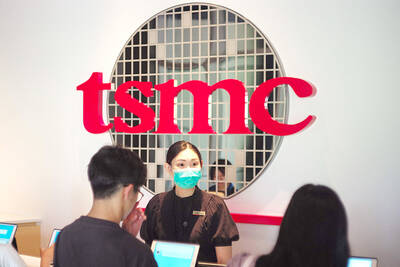Softbank Group Corp is exploring options for selling part or all of its stake in Arm Holdings Inc, either through a private deal or a public stock listing, people with knowledge of the matter have said.
If it pursues a listing, the chip-design company could go public as soon as next year, said the people, who asked not to be identified because the deliberations are private.
That would accelerate a timeline that Softbank founder Masayoshi Son laid out in 2018, estimating an initial share sale for Arm sometime in 2023, a goal repeated in October by Arm chief executive officer Simon Segars.
Son and his deputies began considering options in part because of the improving market for semiconductor companies, two of the people said.
A deal would also fit into Softbank’s strategy to unload many of its holdings and boost the stock price through buybacks.
Goldman Sachs Group Inc is advising on a potential deal, said the Wall Street Journal, which reported the news on Monday.
Representatives for Arm, Goldman Sachs and Softbank declined to comment.
Arm was the UK’s largest listed technology company, receiving royalties from companies such as Apple Inc and Samsung Electronics Co for chip designs used in the world’s most popular mobile phones and tablets.
When Son bought it for US$32 billion in 2016, change came fast. The company added about 2,000 employees and made plans for a new £48 million (US$60 million) UK office building.
Arm would need ample time to make preparations for a listing if it goes that route.
Softbank chief operating officer Marcelo Claure said in an interview with the Financial Times published on Monday that he does not expect Arm to be public in the next 12 months.
Arm, which is owned by Softbank and its US$100 billion Vision Fund, is looking to cut costs and improve earnings, one of the people familiar with the matter said.
The company lost ¥42.8 billion (US$398.95 million) in the fiscal year that ended in March. It is also planning to transfer its data and device-management business to parent Softbank to focus on its main semiconductor operations.

Taiwan Transport and Storage Corp (TTS, 台灣通運倉儲) yesterday unveiled its first electric tractor unit — manufactured by Volvo Trucks — in a ceremony in Taipei, and said the unit would soon be used to transport cement produced by Taiwan Cement Corp (TCC, 台灣水泥). Both TTS and TCC belong to TCC International Holdings Ltd (台泥國際集團). With the electric tractor unit, the Taipei-based cement firm would become the first in Taiwan to use electric vehicles to transport construction materials. TTS chairman Koo Kung-yi (辜公怡), Volvo Trucks vice president of sales and marketing Johan Selven, TCC president Roman Cheng (程耀輝) and Taikoo Motors Group

Among the rows of vibrators, rubber torsos and leather harnesses at a Chinese sex toys exhibition in Shanghai this weekend, the beginnings of an artificial intelligence (AI)-driven shift in the industry quietly pulsed. China manufactures about 70 percent of the world’s sex toys, most of it the “hardware” on display at the fair — whether that be technicolor tentacled dildos or hyper-realistic personalized silicone dolls. Yet smart toys have been rising in popularity for some time. Many major European and US brands already offer tech-enhanced products that can enable long-distance love, monitor well-being and even bring people one step closer to

RECORD-BREAKING: TSMC’s net profit last quarter beat market expectations by expanding 8.9% and it was the best first-quarter profit in the chipmaker’s history Taiwan Semiconductor Manufacturing Co (TSMC, 台積電), which counts Nvidia Corp as a key customer, yesterday said that artificial intelligence (AI) server chip revenue is set to more than double this year from last year amid rising demand. The chipmaker expects the growth momentum to continue in the next five years with an annual compound growth rate of 50 percent, TSMC chief executive officer C.C. Wei (魏哲家) told investors yesterday. By 2028, AI chips’ contribution to revenue would climb to about 20 percent from a percentage in the low teens, Wei said. “Almost all the AI innovators are working with TSMC to address the

Malaysia’s leader yesterday announced plans to build a massive semiconductor design park, aiming to boost the Southeast Asian nation’s role in the global chip industry. A prominent player in the semiconductor industry for decades, Malaysia accounts for an estimated 13 percent of global back-end manufacturing, according to German tech giant Bosch. Now it wants to go beyond production and emerge as a chip design powerhouse too, Malaysian Prime Minister Anwar Ibrahim said. “I am pleased to announce the largest IC (integrated circuit) Design Park in Southeast Asia, that will house world-class anchor tenants and collaborate with global companies such as Arm [Holdings PLC],”